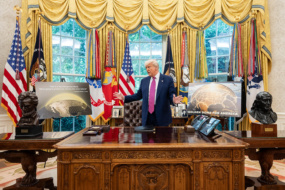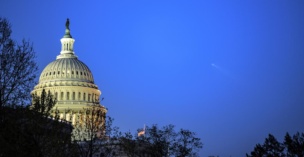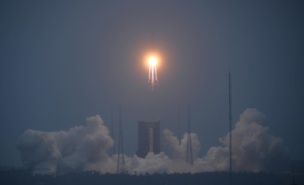NASA’s use of public-private partnerships has played an important role in building up today’s flourishing commercial space ecosystem. Now, Rep. Vince Fong (R-CA) wants to use the same model to keep the US ahead of China in the hypersonics race.
The Making Advancements in Commercial Hypersonics (MACH) Act, which Fong co-introduced in January, would allow NASA to establish a program for testing technology related to hypersonic aircraft. Under the proposed act, the NASA administrator would coordinate with DoD and FAA officials to advance a national hypersonic research roadmap.
Fong, who joined Congress in June 2024 after a special election, also chatted with Payload about how commercial space can support US space ambitions, the administration’s NASA budget request, and the long history of space and aeronautics achievement in his district.
This transcript has been edited for length and clarity.
What are your priorities on the space subcommittee?
Making sure America wins the 21st century space race, not only for our national security, but for economic security. We have adversaries, such as China and Russia, rapidly investing in space and science development that can threaten global stability. Maintaining America’s dominance in space is critical. Looking at dual-use and military applications, staying ahead on the commercial side is critically important as well.
Hypersonics is also critically important for us. [USAF pilot] Chuck Yeager broke the sound barrier decades ago—and we did not continue that investment. China and Russia have now taken the lead when it comes to hypersonic missile tech. We need to catch up.
The MACH Act that we’re moving through Congress would take the model we’ve used in commercial space, and use public-private partnerships to ensure we develop hypersonics tech on the commercial end—but also have military applications.
What can Congress practically do to ensure the US stays ahead on hypersonics?
We need to do the testing. The permits that are necessary to do hypersonic testing are the same permits that are needed for commercial space launches. So when we talk about cutting red tape, that bureaucracy is not only affecting commercial launches, but also impacting the ability to do hypersonics research.
We’re taking the same model that, I think, the commercial space industry has taken. NASA partnered with commercial space companies, and we’ve seen now America take the lead when it comes to launches in space. We want to use that same model for hypersonics. That’s what the MACH Act is all about. It would allow NASA to do launches that will support scientific experiments needed to develop commercial hypersonics advancement.
What is your response to the NASA budget proposal?
We’re working with the White House and with NASA to flesh out their resource needs. Certainly the administration’s proposed budget is a starting point. The president has been clear about his support for space. In his first administration, he outlined his desire for a robust lunar mission. In his address when he was sworn in, he talked about going to Mars.
We have a very ambitious space portfolio that we’re trying to get done, so we’re going to work with the administration, and appropriations committee, as well as the science committee, to ensure NASA has the resources to achieve their mission.
But we also need input from commercial space stakeholders. We have a lot of new platforms and technology that, I think, will help get us to where we need to go in the most efficient way possible
What are the next steps for your bill, the ACERO Act, which would direct NASA to boost its wildfire assessment tools?
We got that bill out of the committee unanimously. We’re moving it forward as a standalone bill, but we’re also moving in the NASA reauthorization bill. We need to leverage these technologies being developed by NASA at Ames and Armstrong, to improve management of the airspace.
This is something that aligns with the recent executive orders that President Trump put out to facilitate unmanned vehicles and drone tech…it comes to a whole host of things, but wildfire tech is one of them.
Do you have any prior interest in space? What led you to be on this subcommittee?
If you look at my district, our area is known for three things: It’s the food production capital of California; the energy production capital of California; and we have a huge aerospace, aviation, and space history dating back to World War II.
We have Edwards Air Force Base, Lemoore Naval Air Station, the Fresno Air National Guard Base—plus the Mojave spaceport, in my district, and NASA Armstrong. When you talk about Chuck Yeager breaking the sound barrier, that happened in my district out at Edwards. You look at what’s being developed out in Mojave with Virgin Galactic, Stratolaunch, and other new space companies.
When we talk about space and aviation history, we made a lot of history in my district.
Working for former Rep. Kevin McCarthy was certainly an amazing experience to see the infancy of commercial space development in my district. When I got elected to the state assembly, I was trying to get California to focus on its aerospace and defense legacy.
Being in Congress, I’ve been able to take all of my experiences, all that knowledge and get on the Science, Space and Technology Committee to try to tackle these big challenges that our nation faces right now.




